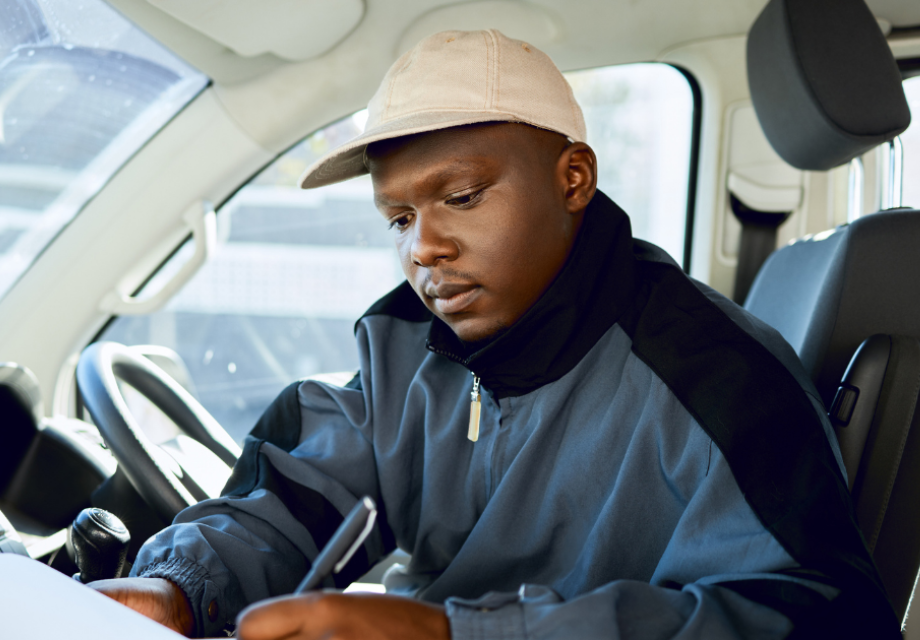Delivering HIV treatment via van: four reasons why it works
Hester Phillips
28 October 2021
More people with HIV benefited from effective treatment after it was provided in vans parked in convenient places like community centres and sports fields
Interviews with people with HIV in Uganda and South Africa have identified four main reasons why providing antiretroviral treatment (ART) in vans parked outside community centres, sports fields and other convenient places led to more people becoming virally suppressed.
What is the research about?
The Delivery Optimization for Antiretroviral Therapy (DO ART) trial provided adults with HIV with ART via mobile vans parked in convenient locations, such as community centres, sport fields and workplaces. This service included ART refills and treatment monitoring.
Doing this increased viral suppression, particularly among men. Around three-quarters (74%) of people who got ART via the vans became virally suppressed, meaning their treatment was working, compared to 63% of people who visited clinics for ART.
Researchers interviewed 150 people involved in the trial between 2016 and 2019 to hear their views on it.
Why is this research important?
HIV treatment is only effective if someone takes it as prescribed, which usually means taking it everyday at the same time. If someone does this, they should be able to become virally suppressed, which means the level of HIV in their body will be so low it will be undetectable in tests. When this happens, someone with HIV will have the same chance of being healthy as people without HIV and they can’t pass HIV on.
That’s why, if a new way of providing HIV treatment has resulted in more people being able to take it correctly (sometimes called ‘adherence’) and become virally suppressed, it is important to understand what was done and why it was successful.
Other HIV programmes can then use this information to do similar things and become more effective.
What did they find out?
1. The mobile ART service worked because it was flexible
During the trial, staff from HIV clinics called people to remind them about their ART appointments and to fix meeting times and places. This allowed people to pick places to meet that would protect their privacy and at times that worked for them. People could also easily contact staff to re-schedule appointments.
This flexible approach cut down on missed meetings and stopped people interrupting their treatment because they had run out of pills. It also made people feel more confident they would be able to get medication refills, so they kept taking their treatment everyday.
2. People liked getting all their services in one go – and not having to queue
Appointments consisted of a single interaction between staff and trial participants. People saw this as more efficient and more private than going to a clinic, where they would come into contact with many staff and large queues of patients.
Not having to wait in line for each service saved time and reduced the risk of being ‘outed’ as someone with HIV.
3. Appointments were unhurried, which made them more effective
Trial participants described the community-based appointments as relaxed and unrushed. Lay counsellors took the time to talk to people about their experiences and concerns, and they encouraged them to stay on treatment. This meant people felt more able to ask questions and discuss challenges.
The counsellors’ cheerful, caring attitudes left people feeling emotionally strong and determined to succeed at taking ART.
4. People did not have to spend time travelling, so they could fit appointments around work
The mobile service reduced the time needed to travel to and from ART appointments. This meant people did not have to choose between getting treatment and going to work and did not have to spend money on transport costs. As people were able to fit appointments around their work they were more likely to attend them.
What does this mean for HIV services?
The DO ART trial shows how providing services that people can fit into their lives makes them more likely to stay on HIV treatment. If you are part of an HIV treatment programme, could you consider trying some of the simple community-based strategies this trial used? Remember – if you are thinking about making changes to an HIV treatment programme, it is important to speak to people with HIV to find out what changes would be more useful for them.
Get our news and blogs by email
Keep up-to-date with all our latest news stories and blogs by signing up to the Be in the KNOW news digest.
